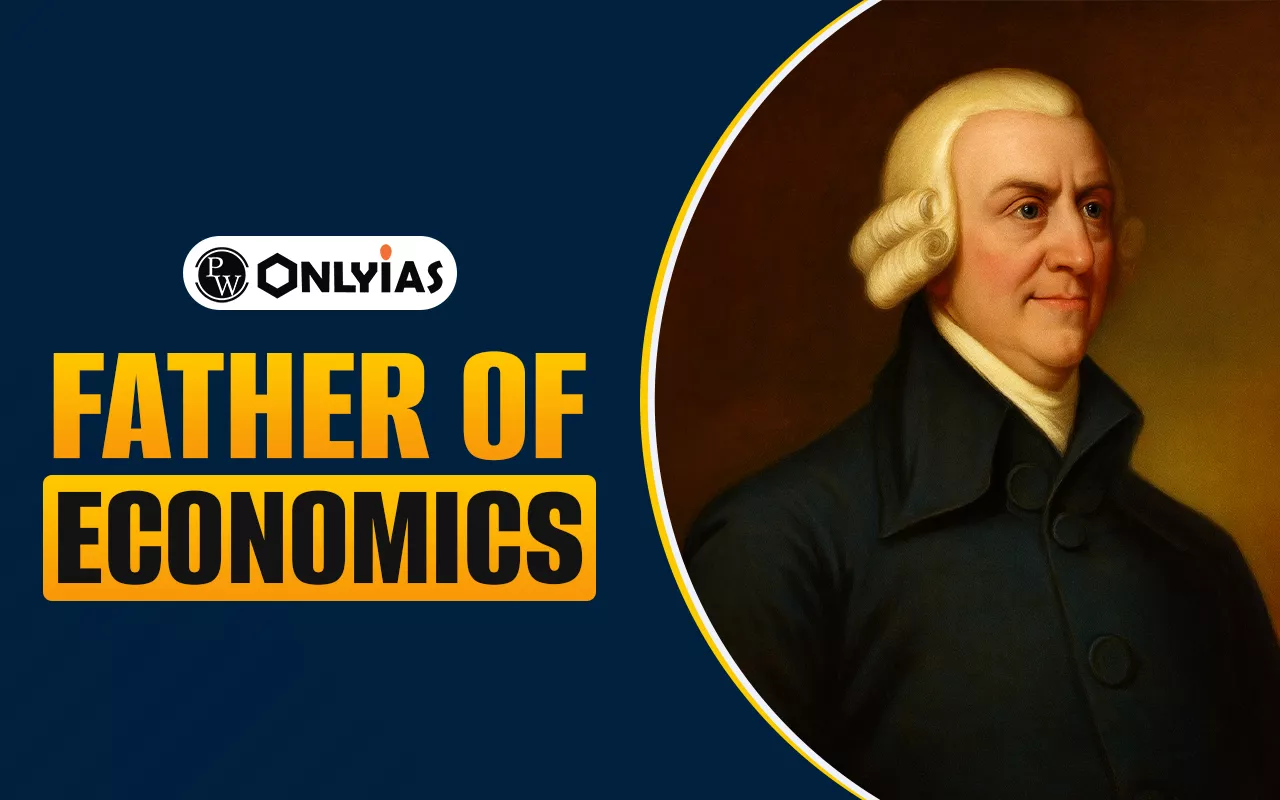Adam Smith, known as the Father of Economics, revolutionized economic thought with his 1776 book The Wealth of Nations. He introduced key ideas like the invisible hand, division of labor, and free markets, shaping modern economics and how nations understand wealth and growth.

Father of Economics: If you are curious about the world of money, business, and trade you must know about the man called the father of economics. This title belongs to a Scottish philosopher named Adam Smith.
He is recognized as the father of economics in the world because he introduced many basic ideas that we still use today. His work changed the way people thought about wealth and how countries grow rich. This makes him one of the most important people in the history of this subject.
Adam Smith was born in Scotland in 1723. He was not an economist in the way we use the word today he was a social philosopher. Smith was a professor at the University of Glasgow where he taught moral philosophy. This means he thought a lot about how humans act what is right and wrong and how society works. His ideas about people and their behavior became the foundation for his ideas about money and markets.
Adam Smith father of economics because of his most famous book. In 1776, he published a huge book called An Inquiry into the Nature and Causes of the Wealth of Nations. We usually just call it The Wealth of Nations.
This book was the first complete work that explained how the economy of a nation works. It explained how a country’s wealth does not come from having lots of gold. Instead, Smith argued that a nation’s wealth comes from the things its people produce and trade.
In this book he shared three very powerful ideas:
The Invisible Hand
This is Adam Smith’s most famous idea. He said that when people try to earn money for themselves, they also end up helping everyone else.
Think of a baker. The baker does not make bread to be kind to the people in the town. He makes it because he wants to earn money. However, by working to make a profit, the baker provides the town with the bread they need. It is as if an invisible hand is guiding his self-interest to benefit the entire community.
Division of Labor
Smith explained that splitting up a big job into many small, simple tasks makes production much faster. This idea is called the Division of Labor.
He used the famous example of a pin factory. If one person tries to do all the steps to make a pin, they might make only one pin a day. But if the work is divided, one person cuts the wire another sharpens it and another puts on the head ten workers can make thousands of pins a day. This focus on specialization is how factories and businesses become more productive.
Free Markets
Smith believed that the government should not control businesses or trade too much. He argued for a free market where competition and supply and demand set the prices, not the government. He felt that having too many rules would stop the market from growing. This idea of minimal government interference is called Laissez-faire.
Check Out UPSC CSE Books
Visit PW Store
Though Adam Smith is known for The Wealth of Nations he wrote another important book earlier in his life:
| Adam Smith Main Works | ||
| Book Title | Year Published | Focus |
| The Theory of Moral Sentiments | 1759 | This was his first major work. It talks about ethics and how people develop a conscience and make moral judgments. |
| The Wealth of Nations | 1776 | This is his main book on economics. It talks about free markets, the invisible hand and how countries can increase their wealth. |
Ready to boost your UPSC 2026 preparation? Join PW’s UPSC online courses today!
The Father of Economics is Adam Smith a Scottish economist and philosopher.
The most famous book written by the father of economics, Adam Smith, is An Inquiry into the Nature and Causes of the Wealth of Nations published in 1776.
The Invisible Hand is a famous concept by Adam Smith. It means that when people act for their own benefit they unintentionally and automatically create the best outcome for society as a whole.
The division of labor is an idea introduced by Adam Smith to explain how production can be increased. It means breaking a large task into many smaller, specialized tasks.

<div class="new-fform">
</div>